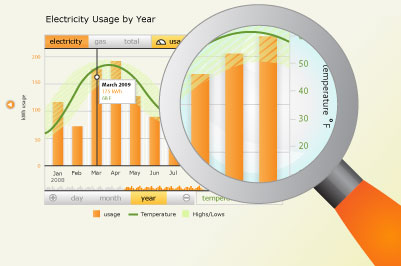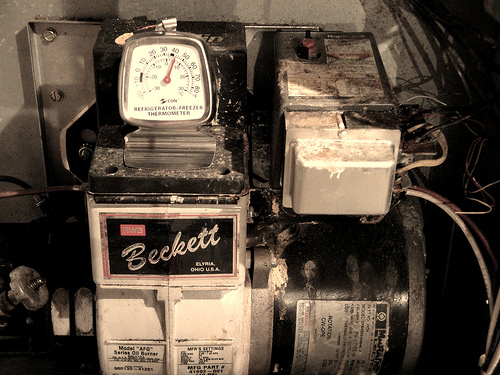At a dinner this week in San Francisco, I found myself seated between Matt Golden, co-founder of energy efficiency retrofitter Recurve — the startup formerly known as Sustainable Spaces — and Cisco DeVries, co-founder of Renewable Funding, the Oakland outfit that pioneered municipal financing of residential solar arrays.
The hot topic was Home Star — aka Cash for Caulkers — the proposed $6 billion federal energy efficiency rebate program now wending its way through Congress. The bill is being cast as a way to fight climate change, lower energy bills for 3.3 million homes and create an estimated 168,000 sustainable green jobs in a recession-wracked nation.
No surprise that a coalition of environmentalists, labor groups, and businesses have hitched their star to Home Star, including Home Depot, Dow Chemical, the Sierra Club, and the Air-Conditioning, Heating, and Refrigeration Institute.
About $3.6 billion of Home Star cash would be devoted to “Silver Star,” a program designed to quickly roll out basic energy efficiency improvements by providing up to $3,000 in rebates per household for such things as insulation and sealing doors and windows.
The Gold Star part of the program offers $3,000 for every 20 percent in energy savings that result from retrofits, up to a maximum of $8,000. Under Gold Star, homeowners could undertake more extensive energy efficiency retrofits as well as install renewable energy systems such as solar arrays.
Both programs would cap the rebates at 50 percent of a project’s cost.
“This program is designed to rapidly create jobs but also a long-term American industry,” Golden said a couple days after the dinner during a press conference held in advance of Congressional hearings Thursday. “We have an opportunity to contribute to energy independence and meet our climate goals. The construction industry is in the realm of a Depression. These are 100 percent American jobs.”
It’s winning rhetoric but what I wanted to know was this: with billions of dollars in federal subsidies potentially flooding the energy efficiency market, how do you ensure that retrofits are done properly and that the climate change dividend gets paid?
Talk to old-timers who lived through various solar subsidy programs back in the 1970s and ’80s and they’ll bemoan the shoddy operators that tried to cash in on the market, giving legitimate companies a bad name.
Golden takes pains to emphasize that Home Star energy efficiency retrofits will be audited to ensure “the American taxpayer is getting their money’s worth.”
The details of those audits remain to be worked out but some high-tech tools could help make sure those caulking guns shoot straight.
Over the past year there’s been a proliferation of home energy management software from companies like Google and Microsoft as well as startups such as AlertMe and Tendril.
 New Microsoft Hohm software provides real time data on home energy useThe idea behind services like Microsoft’s Hohm and Google’s PowerMeter is to give homeowners data — in real time for those whose utilities have hooked up smart meters — on their energy use. That way they can pinpoint where they may be wasting electrons, whether through bad habits or electricity-hogging appliances, and adjust their behavior accordingly.
New Microsoft Hohm software provides real time data on home energy useThe idea behind services like Microsoft’s Hohm and Google’s PowerMeter is to give homeowners data — in real time for those whose utilities have hooked up smart meters — on their energy use. That way they can pinpoint where they may be wasting electrons, whether through bad habits or electricity-hogging appliances, and adjust their behavior accordingly.
I asked Microsoft executive Troy Batterberry whether Hohm could play a role in Home Star to monitor electricity usage before and after a retrofit and quantify the energy savings from various improvements.
“Absolutely and it’s a question we get from our utility partners,” said Batterberry, who runs the Hohm program. “We’re going to have mountains of data that we can use to verify, say, what the expected savings will be when a person puts in a new high efficiency heat pump or air conditioner.”
“Home Star could ignite the use of this type of tool,” he added.
Such programs could also come in handy in helping retrofit firms identify energy hogs in a home.
Dan Reicher, director of climate change and energy program’s for Google.org — the search giant’s philanthropic arm — discovered that feature of the company’s PowerMeter energy management software when he began using it at his home.
“Literally with PowerMeter, everyone discovers something about their home they didn’t know about,” Reicher told me during a recent visit to Google’s Silicon Valley headquarters. “In my case I had an old gas furnace but decided that given we don’t have a lot of cold weather around here it didn’t make a lot of sense for me to replace it. What I didn’t realize was that the furnace had an ancient electric motor.”
Once Reicher started using PowerMeter he began to notice spikes in his home’s electricity usage every time the furnace came on. After some investigation he discovered the culprit was the old inefficient motor that pushed hot air through the house’s ductwork.
Such data could help make those Home Star dollars go even further by providing at least a partial roadmap of a home’s energy efficiency weak spots before the guys and gals with the caulking guns show up at the front door. And assure taxpayers that their dollars are well spent.



